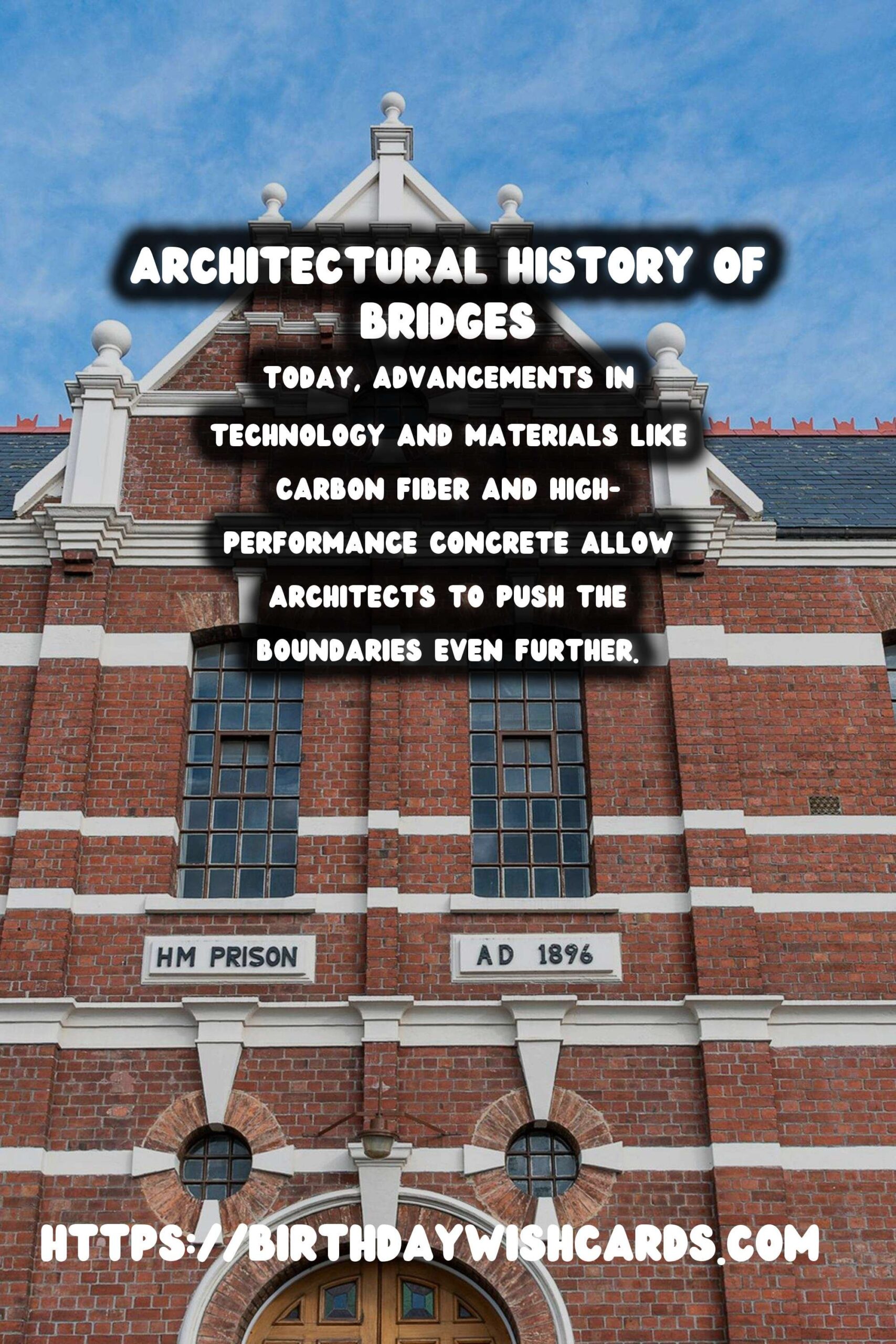
Bridges have evolved from simple structures made from natural resources to complex feats of engineering that define skylines and endure for centuries. This journey through the history of bridge architecture provides a vivid tapestry of human ingenuity, resilience, and creativity. Join us as we explore how these magnificent structures have transformed over time.
The Origins: Simple Beginnings
The earliest bridges were no more than fallen trees or ropes spanning small streams, existing long before the dawn of recorded history. These primitive crossings were the first attempts by humans to stretch beyond the limitations that rivers and valleys imposed.
As the need for durable and reliable bridges grew, ancient civilizations such as the Romans and Chinese began constructing bridges using stone and wood, often reinforced with iron clamps. The Pont du Gard in France, a Roman aqueduct bridge, still stands today as a testament to the engineering prowess of ancient architects.
The Middle Ages: The Rise of Stone Bridges
During the Middle Ages, bridge construction flourished with the rise of stone as the primary building material. The iconic London Bridge, originally constructed of timber in the Roman period, was rebuilt in the Middle Ages using stone. This shift heralded an era of more durable structures, capable of withstanding the forces of nature and war.
Notably, the design and construction of medieval bridges were often spearheaded by religious orders, who viewed these ventures as acts of piety. The Pont Saint-Bénézet in Avignon, France, is one such example, embodying both engineering skill and religious fervor.
The Renaissance and Enlightenment: Engineering Advances
The Renaissance brought a renewed interest in science, mathematics, and art, which heavily influenced bridge design. Engineers began to apply scientific principles to create stronger and more aesthetically pleasing bridges. The Ponte Vecchio in Florence exemplifies the harmonious blend of architecture and commerce, with shops lining its pedestrian pathway.
The Enlightenment period saw further advancements in materials and techniques, setting the stage for the Industrial Revolution. Iron began to replace stone and wood in bridge construction, leading to longer spans and more ambitious designs.
The Industrial Revolution: Steel and Innovation
The 19th century marked the beginning of the use of steel, a material that transformed bridge architecture. The era is best represented by the construction of the Brooklyn Bridge, one of the first steel-wire suspension bridges, which combined key elements of both traditional and modern engineering.
This period also saw the birth of truss bridges and cantilever designs, enabling bridges to span previously unimaginable distances and create new pathways for rail and roadway traffic.
The Modern Era: Iconic Structures and New Materials
In the 20th and 21st centuries, bridges not only serve practical purposes but also symbolize human achievement and artistic expression. The Golden Gate Bridge has become one of the most photographed landmarks worldwide, admired not just for its structural accomplishment but also its striking Art Deco design.
Today, advancements in technology and materials like carbon fiber and high-performance concrete allow architects to push the boundaries even further, creating impossibly slender and long-spanning structures with sustainability in mind.
Conclusion: The Future of Bridge Architecture
As we look to the future, bridge architecture will continue to evolve, driven by technological advancements and a need for sustainable solutions. With each new design and material innovation, our bridges will continue to be more than just pathways; they will be icons of human progress.
Bridges have evolved from simple structures made from natural resources to complex feats of engineering that define skylines and endure for centuries. Today, advancements in technology and materials like carbon fiber and high-performance concrete allow architects to push the boundaries even further. 
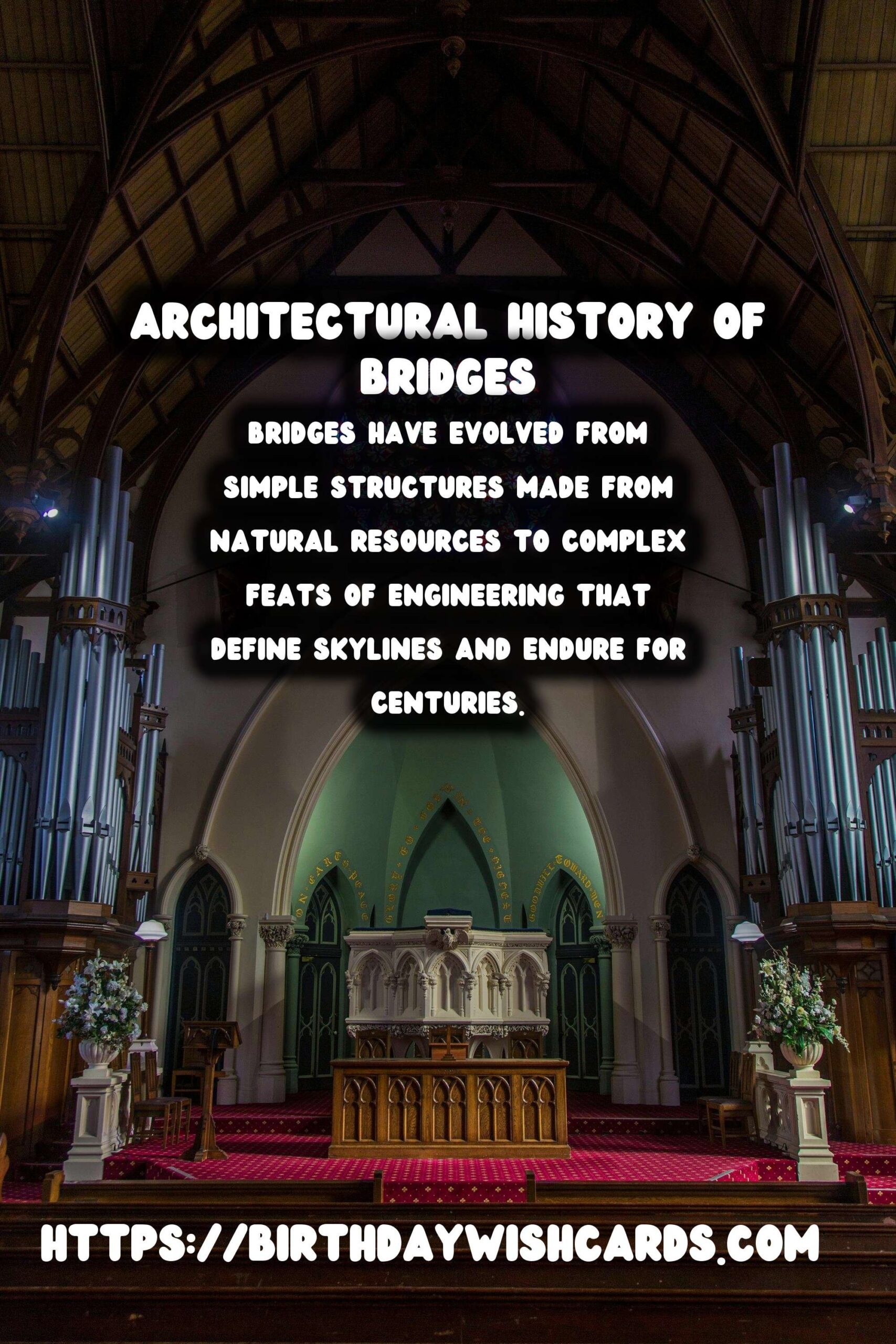
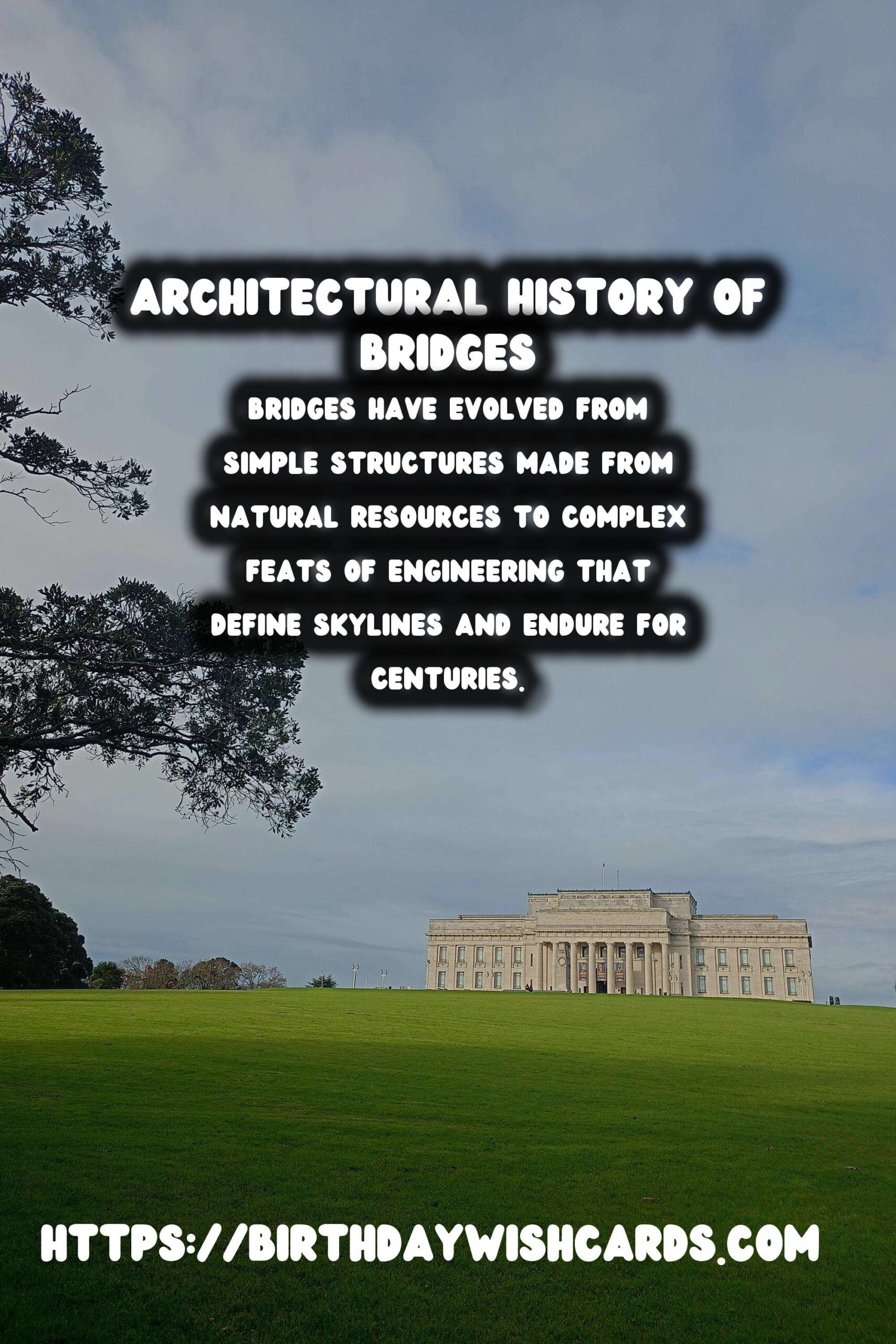
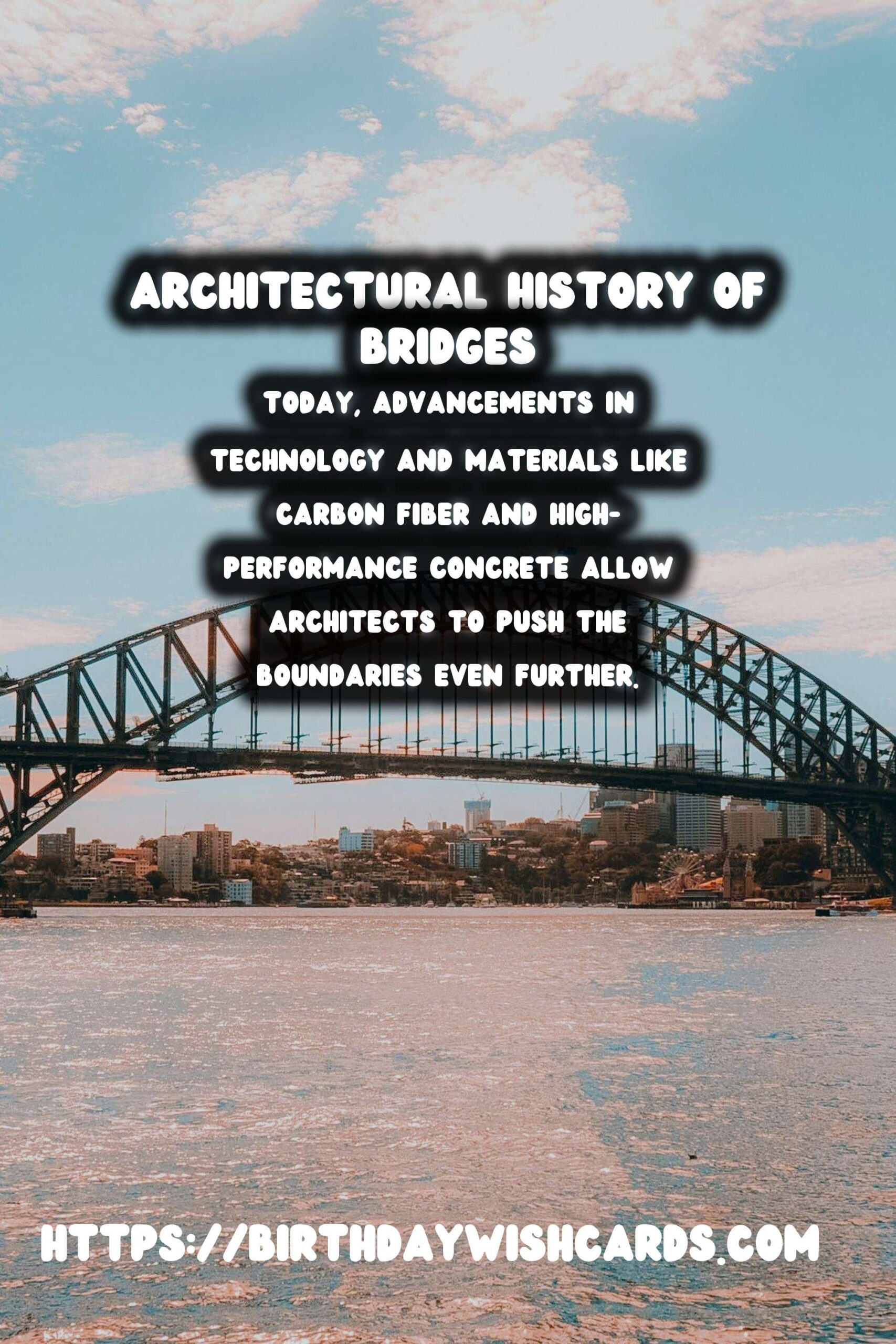
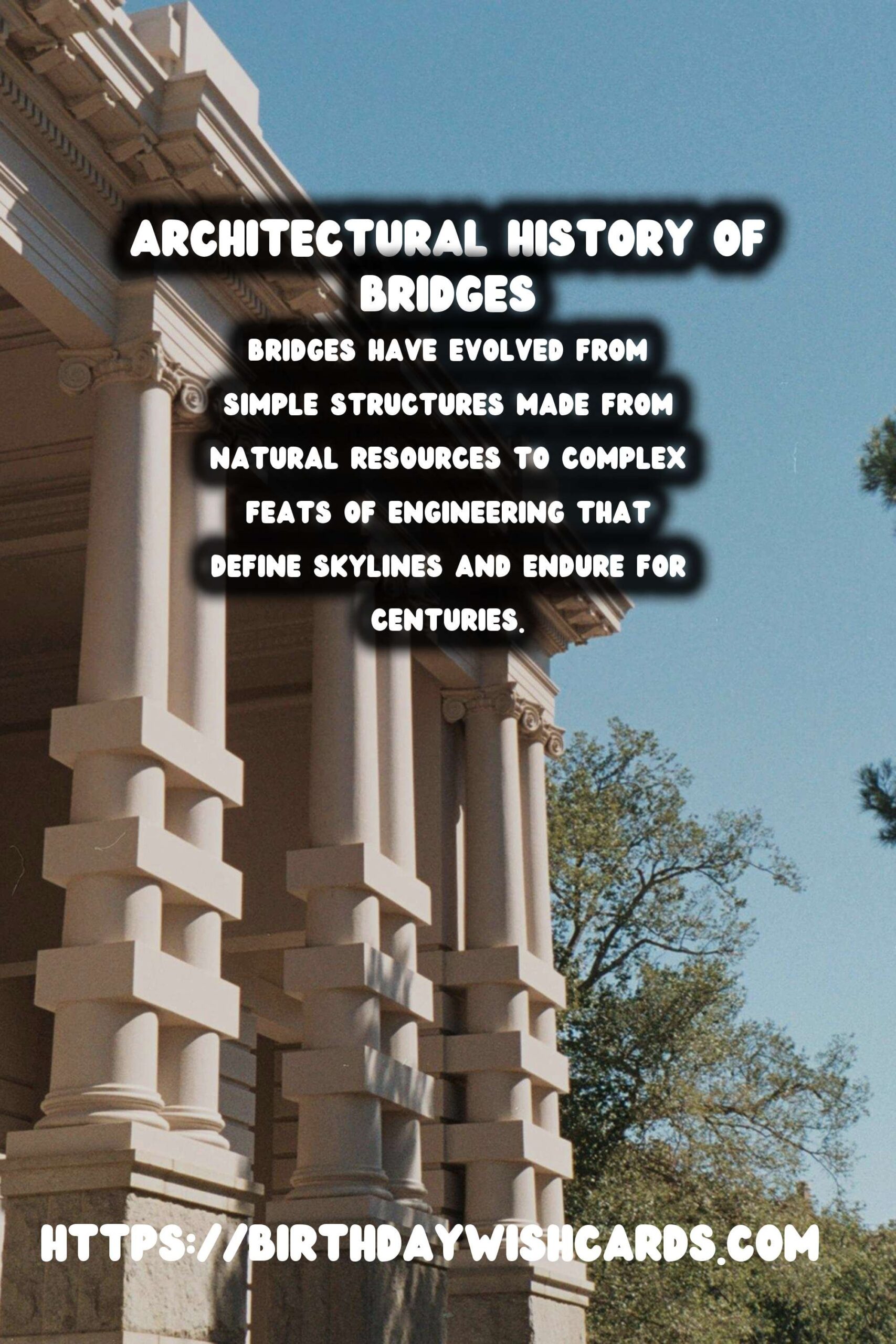
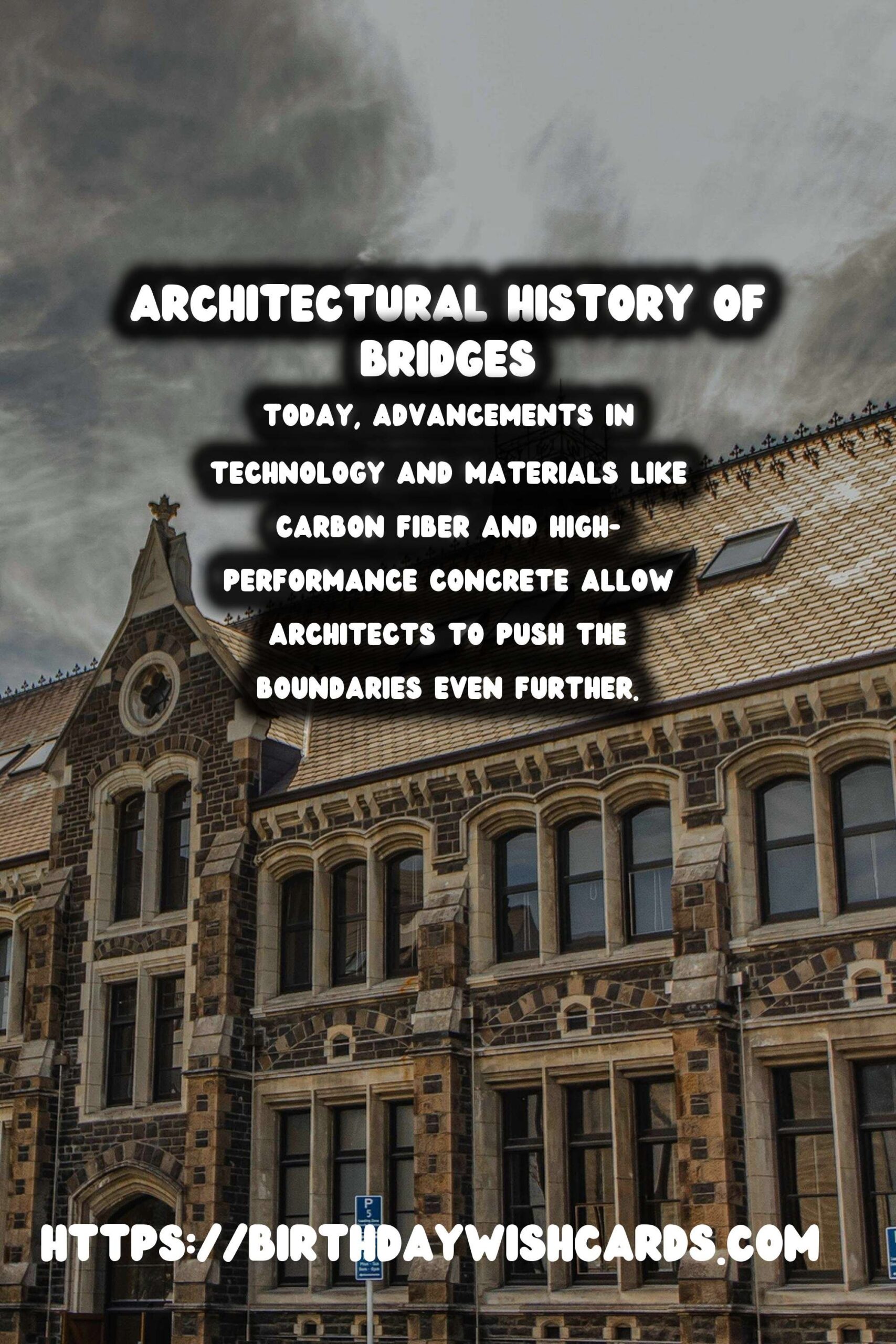
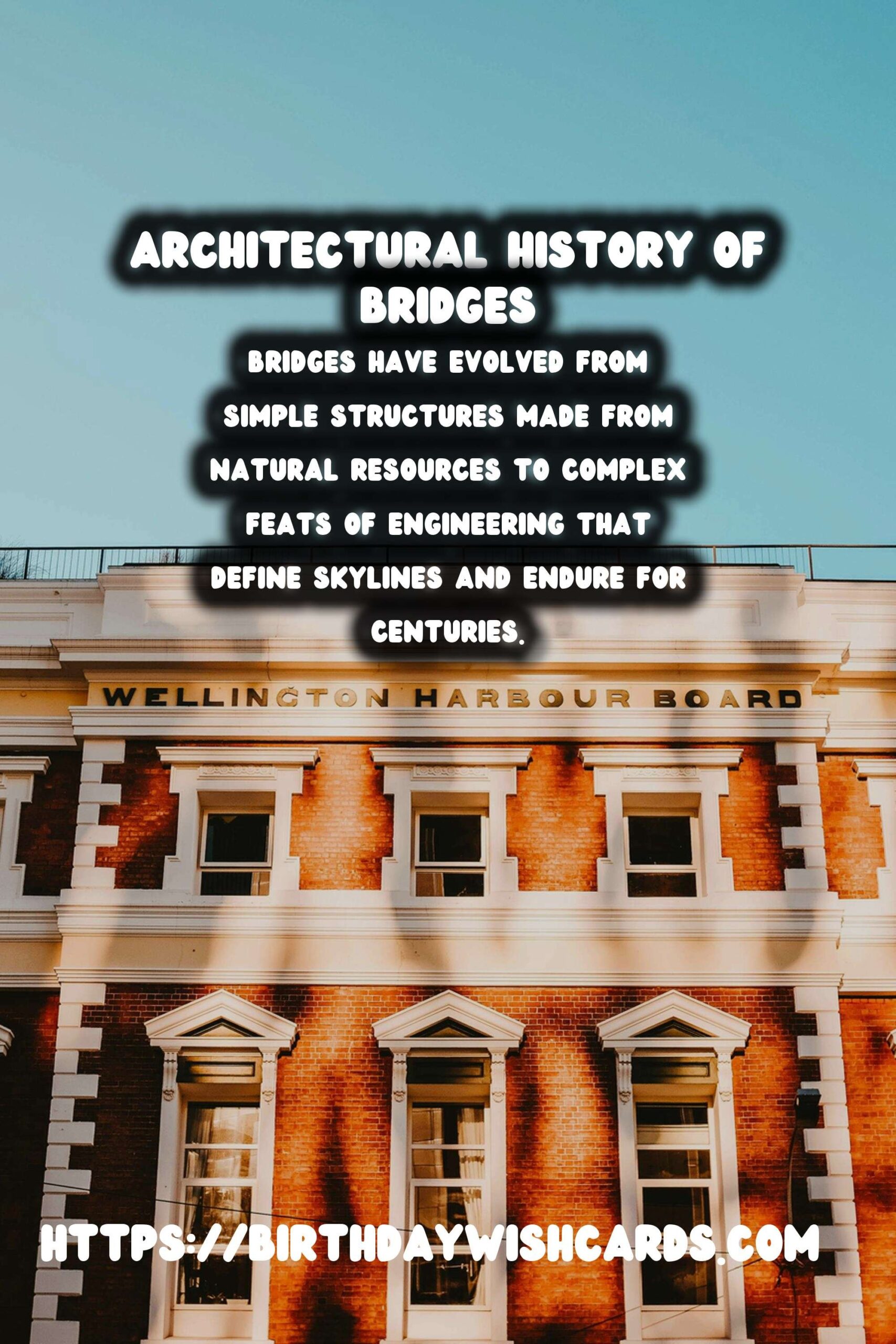

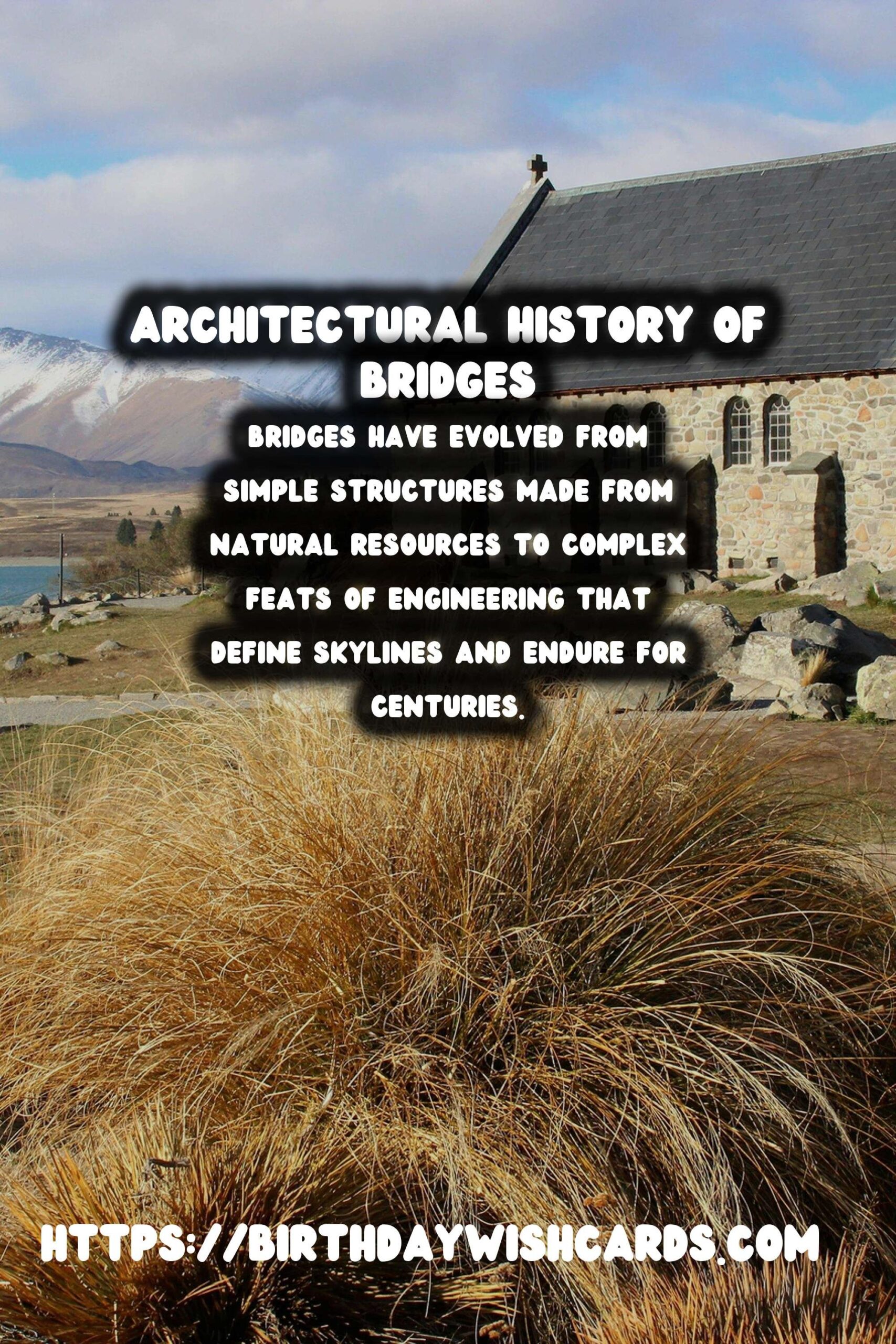
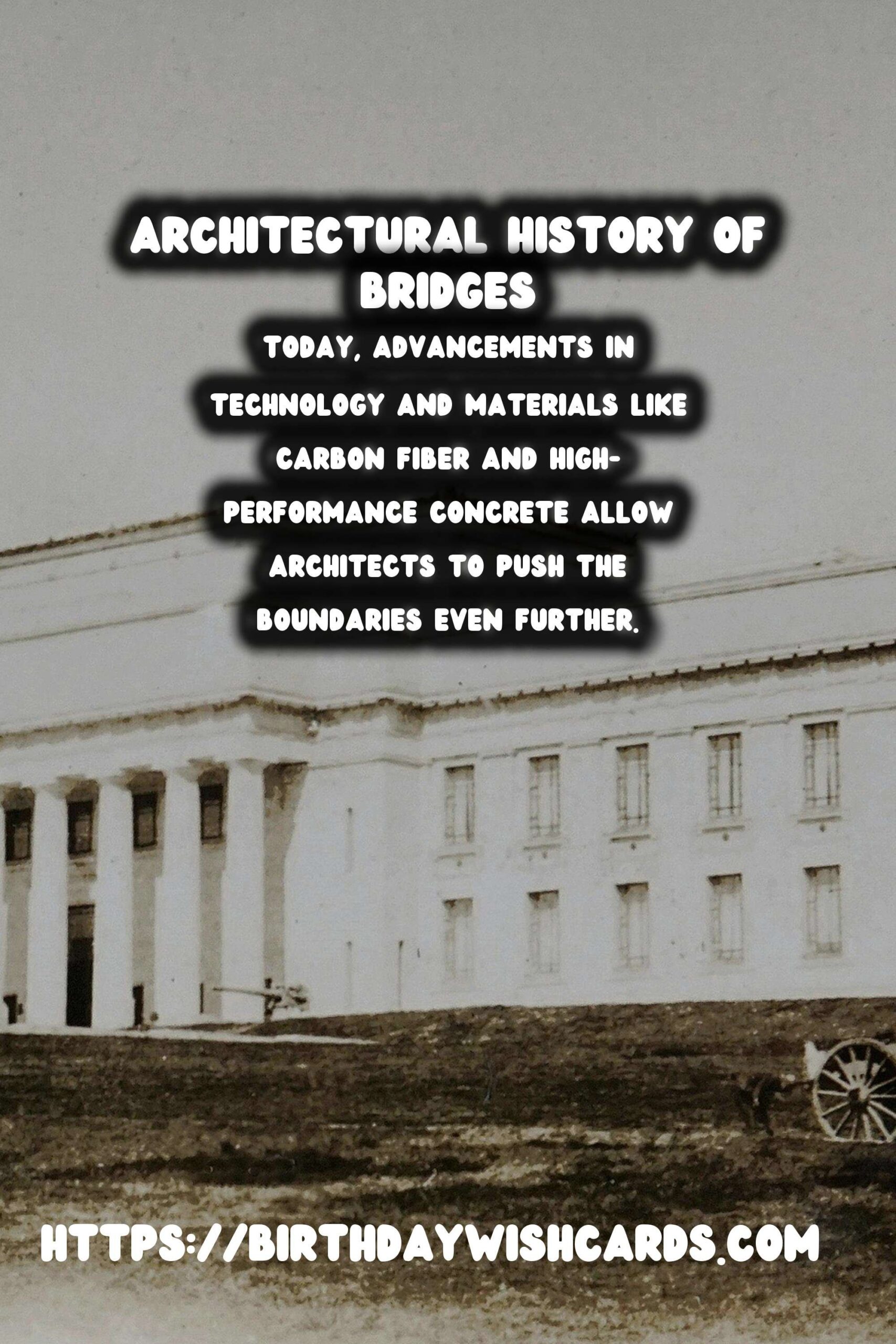
#BridgeHistory #ArchitecturalFeats



